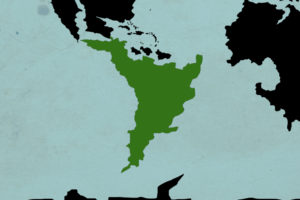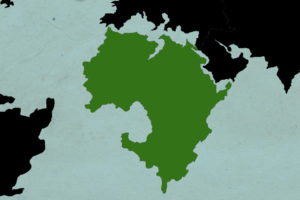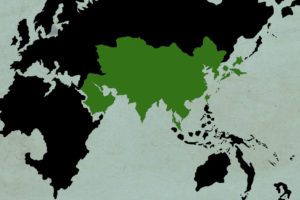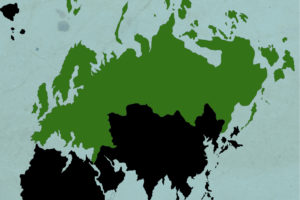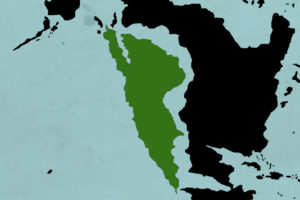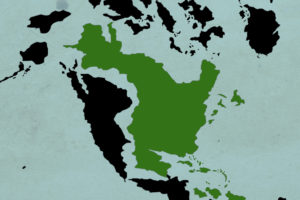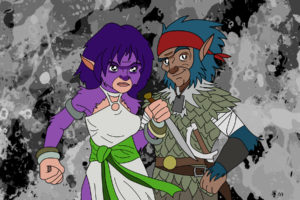Fabella (fah-behl-ah)
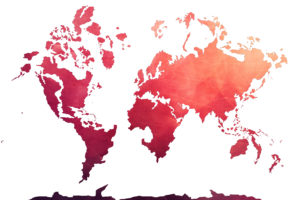 Fabella, otherwise known as “the world,” was a pristine self-contained eco-system and the only known planetary body in the universe. It was populated by twelve known species of people and tens of thousands of creatures, spread across seven continents. Magic heavily influenced the society and the environment. There were significant mountain ranges, such as the Violet Mountains which were literal purple majesties. Notable river networks included the expansive Firekis (Fier-kiss) River, hosting the largest assortment of creatures on the planet.
Fabella, otherwise known as “the world,” was a pristine self-contained eco-system and the only known planetary body in the universe. It was populated by twelve known species of people and tens of thousands of creatures, spread across seven continents. Magic heavily influenced the society and the environment. There were significant mountain ranges, such as the Violet Mountains which were literal purple majesties. Notable river networks included the expansive Firekis (Fier-kiss) River, hosting the largest assortment of creatures on the planet.
Climate varied between extreme heat and bone-chilling cold. Lightning bolts take on various hues, red and green are the most common. Polar regions in the far north and south experience the most serious shifts in frigid temperature. Territory set across the equator experienced sweltering heat.
The Sky
Scientists believed Fabella rotated around a single sun. There were no other planets or even a moon. During the day, the sky was populated by billions of twinkling stars. At night, bright, colorful aurora lights shimmered overhead.
There were three floating islands on Fabella. A floating island was defined as a land mass suspended freely in the air, some 30,000 feet above the surface. The most famous floating island was Elpis whose population managed to steer the island around the globe. The Elpian people routinely follow the changing seasons, choosing to guide their island south during the winter to escape frigid temperatures. The other two floating islands, Parim and Asda, located in the western part of the northern hemisphere over Kathara did not migrate and instead hovered in place. Attempts in the past to control their flight pattern resulted in supreme failure.
The Land
The land surface was divided into several rigid tectonic plates layered with islands and continents. Fabella’s interior remained active with a solid iron inner core, a liquid outer core that generated the magnetic field and a mantle that drove plate tectonics.
Continents
Aflar occupied the southern portion of Fabella’s western hemisphere. Almost all of mainland Aflar sat on the Aflarian Tectonic Plate. Aflar’s major mineral resources were gold, silver, copper, iron ore, tin, and pixie dust. These resources found in Aflar brought high income to its countries especially in times of war or rapid economic growth by industrialized countries elsewhere.
Astar was Fabella’s second-largest and second-most-populous continent. Its population was the youngest amongst all the continents; the median age was 19.7, when the worldwide median age is 30.4. Oozebek (Ooz-behk) was Astar’s largest country by area, and Carchul (Kahr-chool) by
population. Astar straddled the equator and encompasses numerous climate areas; it was the only continent to stretch from the northern temperate to southern temperate zones. Astar hosted a large diversity of ethnicities, cultures and languages.
Auslar was Fabella’s most populous continent, located primarily in the eastern and northern hemispheres and shared the continental landmass of Eular with the continent of Euplar. In general terms, Auslar was bounded on the east by the Holcat Ocean, on the south by the Dalima Ocean and on the north by the Yartha Ocean. The western boundary with Euplar was a historical and cultural construct, as there was no clear physical and geographical separation between them.
Euplar was a continent that comprised the westernmost part of Eular (Supercontinent of
Euplar and Auslar). Euplar was bordered by the Yartha Ocean to the north, the Iylie Ocean to the west, and the Monkbat Sea to the south. To the east and southeast, Euplar was generally considered as separate from Auslar. Yet the non-oceanic borders of Euplar were arbitrary. The primarily physiographic term “continent” as applied to Euplar also incorporated cultural and political elements whose discontinuities were not always reflected by the continent’s current overland boundaries.
Kathara was a continent in the western hemisphere of Fabella. Throughout most of Fabella’s history, the entirety of Kathara was home to the Republic of Fantasia. Fantasia was one the world’s three superpowers and widely regarded as the most righteous and secure country in the world. St. Tara’s Academy of Magic and Science stood prominently in the capital city of Hercules (Hehrk-yoo-lees) as the greatest magical institution in the world. Two floating islands soared over the Katharan landscape. This was why ancient harpies chose to make it their base for Ancient Punt, a precursor to the Sheba Union.
Sakria was a continent entirely within the Northern Hemisphere and almost all within the
Western Hemisphere of Fabella. It was bordered to the north by the Yartha Ocean, to the east by the Iylie Ocean, to the west and south by the Holcat Ocean, and to the southeast by Aflar and the Sepican Sea.
People
Humans were not the dominant form of intelligent life. A person on Fabella was defined as a humanoid being capable of complex thought who contributed to society. There were twelve different species considered to be people:
Centaurs were part of the three “taurs,” a separate group of intelligent halfbreeds deemed to be different than traditional people. They bred similar to humans. They were not monogamous by nature. Males had at least three mates and sired no less than seven young foals throughout their lifetime.
The entic people were the second largest people group in Fabella. Part of the halfling family, entics were largely characterized by their small stature, big eyes, and glowing antennae.
Dwarves or Dwarfkind were a race of people measuring about five feet tall. The name “dwarf” strictly referred to the male of this race because females were “gnomes.” Long dark hair, a stocky build, and deep voices were typical characteristics of dwarfkind.
Elves were very similar to humans, but they have several differences to separate them from their “lesser” cousins. Aside from the pointed ears and lack of body hair, the most visible difference between elves and humans was that elves had brighter hair colors.
Fauns were part goat people with horns and hairy shins ending in hooves. Males were “billies” until they reach the age of thirteen at which point they became known as “bucks.” Likewise females were “nannies” until they turned fifteen and become “does.”
Goblins were the earliest purveyors of trade in Fabella and were first to develop the sword. Skin was predominantly green in color. Boils routinely cover their elongated faces and their hands were about twice the size of an average person.
Harpies were the dominant people of the air. Though harpies shared obvious similarities to average humans, they do not consider themselves men. An average harpy’s body was built like a man with feathers starting from the neck down, great big wings allowed them to achieve flight, and feet ended in talons.
Human anatomy in Fabella was no different compared to those born on Earth. Humans of Fabella were not the apex predators they were on Earth, so they had to be considerably more athletic and stronger in order to survive.
Fabella’s surface waters were filled with life. A typical merperson was bipedal with legs ending in a pair of flippers for feet. Mermaids had scales which grew up around the breasts.
Minotaurs were bipedal cattle-folk able to walk upright. Hair layered their bodies. Only male bulls had horns. Cows were thickly set, powerful, beings first females to be deployed to the frontlines.
The slithtaur were snake people classified as part of the “Taurs” an official international minority. Slithtaurs considered themselves a distinct group and often resisted being lumped in under tauran identity.
Trolls were short hairy simian-like people ranging in height of about 4 – 5 ft. tall with brightly colored hair. Their leathery finger like toes made their feet a second pair of hands good for grasping objects and climbing.
Water
Water on Fabella was divided between oceans, lakes, rivers, and ice. About 75% of Fabella’s surface was covered with water, mostly by its oceans. Many vicious sea monsters lived on the deep ocean floor. It was a site of great focus for oceanographers. The water cycle (known scientifically as the hydrologic cycle) referred to the continuous exchange of water within the hydrosphere, between the atmosphere, soil water, surface water, groundwater, and plants.
History
See main article Timeline.
Age of Creation
“Age of Creation” was a broad term for prehistoric Fabella prior to the invention of the wheel. The first generation of people were created from plant life in the Adele Peninsula on the Island of Adele. Segregation between tribes made up of the same species developed in this era as people split off from each other. Additional key events included the human revolt, the first tribal terror attack, and tents.
Age of Civilization
The invention of the wheel by humans in the Erikun Tribe of Kathara effectively began the Age of Civilization. The Rise of Punt was notable in this era because Punt was the ancient precursor to the Sheba Union, one of the most powerful countries in the world throughout history. Punt started out in Kathara as a city led by the harpies, but goblins took over in the Second Dynasty. Major innovations in this age included grooming habits, monuments, early writing, and magic staffs.
Age of Dynasties
The Age of Dynasties was also the Age of War. Conflicts between budding empires and people which had been brewing for centuries eventually boiled over and wars erupted all over the world. The most notable war on record was the Sea Peoples Rebellion, which took place between the kingdoms of Punt and the underwater kingdom of Niflhel. Ancient Punt at this time was controlled by the harpies and Titans, so this conflict was literally one which pitted the sky against the sea. The greatest battle of this war was the Battle on Embasin Cove. Other notable conflicts included the Kernies invasion of Cambia in Astar, Trismacus the Conqueror’s Twelve challenges, and the Puntian Civil War. The Republic of Fantasia was also established in this era which led to the first hospitals, schools, and theater auditoriums in Fabella. Fantasia was also the first kingdom to develop the alphabet and volleyball.
Age of Marvels
The Age of Marvels saw the reign of witches and wizards known as “The Olympians” gain power over the west. It began with the Battle on Mount Olympus. The birth of Aphrodite and the events surrounding her life were regarded as extremely pivotal moments in history. Other notable events in this time period included the rise of the Niburan Republic, the beginning of the Silverbow Dynasty in Nysa, the invention of coinage, the 365-day calendar, and the rise of Unitisia.
Age of Monsters
This era is called the Age of Monsters because of the sharp incline of monster attacks – dragons in particular – and the Titan Army. Disease, widespread rebellions, and mega-monster migration contributed largely to a decline in population. The period was marked by large-scale wars between the Sheban and Fantasian Empires in the Great West and rise and fall of evil Titans in the Far East.
Age of Expansion
The Expansion Age was an era when people started to spread out. The push to explore and expand boundaries extended to nations all over the world as many wars began largely in response to invasions from neighboring countries. This era marked several important discoveries. Notable concepts included magical physics, biological effects of shapeshifting, and the printing press.
Age of Revolution
The Age of Revolution was a major turning point for the history of Fabella. Notable revolts in this period are the First and Second Halfling Uprising, and the Sheban Civil War. This period was marked by revolutionary concepts such as Blind Trials, the Neverland Treaty, and Democracy.
Age of Machines
The Machine Age was a period of change for Fabella. Steam engine technology was incorporated into fashion accessories of the era. The most significant event of this era was the rise of the Bloodborne Empire in the continent of Auslar, located in the Far East. Other major events include railways, the radio, the first cable car system, and magic mirror messaging.
Age of Domination
The Age of Domination was a dark time in Fabella‘s history. Following their victory in First Continental War (CWI), the Bloodborne Empire gained complete control of Fabella. The world suffered under the Bloodborne’s oppressive might. English became standard across the world. Anyone who didn’t speak it was severely punished. So many small rebellions cropped up in cities across the globe that there was at least one airship carrier over every major city.

